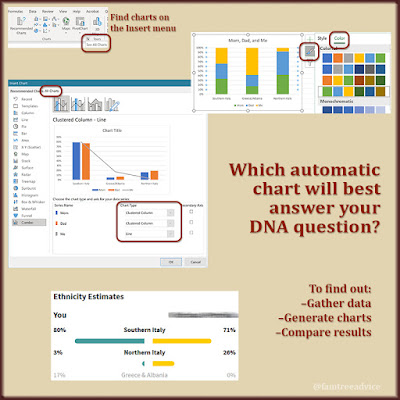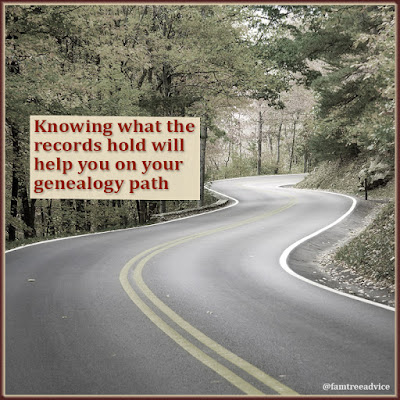I belong to a Facebook group devoted to my Grandpa's hometown of Colle Sannita, Italy. Once in a while someone will post an old photo of their ancestor. With a little bit of information, I can work that ancestor into my extended family tree.
I also belong to a Facebook group devoted to my parents' childhood neighborhood in the Bronx, New York. Some people in the group have last names I recognize as being from my Grandpa's hometown. Three of these group members have each led me on day-long research quests. Each one of them is now in my family tree and excited by their newfound family trees.
This is my favorite hobby right now! In one case, the person from my parents' old neighborhood turned out to be my 7th cousin. In other cases, the relationship was more distant, but added more depth to my family tree.
 |
| With your genealogy skills, Facebook can expand your family tree. |
Find Some Groups
If you know your ancestors' hometown in the "old country," search Facebook for the town name. Search for the old neighborhoods, or your family's old church or synagogue.
With our ability to dig up the past, we genealogists need to tread lightly. Don't announce that you want to investigate everyone's family. Be subtle and let things evolve.
Last week a person in the Bronx Facebook group posted a photo. I mentioned that his family must be from Colle Sannita because of his last name. He responded, yes, you're right! He offered a few more of the last names in his family. I knew they were all from that same town.
When he asked me how I knew his family was from there, I told him about my Grandpa and posted his 1927 wedding photo. Then the man with the Colle Sannita last name told me something very surprising. My grandparents were his godparents! He said he visited them often.
This started a conversation in the group. A couple more people said their parents came from Colle Sannita. I offered to build a tree for one, which I did. The conversation continued, and I learned enough to identify the first man's ancestors. I didn't pry. I let it evolve.
 |
| Love it or hate it, Facebook has a lot to offer your family tree. |
Pay Attention to Your Cousins
If you can't find a group for the old neighborhood or the old towns, keep your eyes open. I spotted a response to a photo from my distant cousin (we're friends who interact a lot). I gathered that the man who posted the photo is her cousin. I picked up clues and fit my cousin's cousin into my family tree. He turned out to be my 7th cousin once removed.
Since I don't know this man, I'll reach out to the cousin I know and tell her what I've found. She can introduce me to him so I don't come off as a crazy stranger.
Where to Start
When the 1950 U.S. Federal Census is released in April 2022, we won't need to reach quite as far back to begin this type of search. But for now, we can start by finding the right family in the 1940 census.
Let's take the case of the man with the Colle Sannita last name. He mentioned his parents' names, and I knew he lived near my parents. That helped me find him as a little boy in the census.
When you've identified the family, keep climbing. If the parents are immigrants, look for a ship manifest or naturalization papers. World War I and II draft registration cards are a great help. They give you a reliable birth date, and sometimes a town of birth.
With a bit of work, I found the man's parents' birth dates in U.S. naturalization papers and a draft registration card. Then I found birth records for his grandparents in Italy. Next, I worked to fit everyone into my large family tree.
In the end, I found 11 different relationships to this man. All 11 are weird, like "nephew of wife of 3rd cousin 3x removed." But I'd guess my Grandpa knew this man's parents back in the old country.
I have an ace-in-the-hole that makes this hobby more fun. I've put in the time to make all available Colle Sannita vital records searchable on my computer. Because I have this awesome database—something no one else has—I'm eager to put it to good use. You can still tackle a project like this without such a database. It'll just take longer.
What's in it for you? Well, I found out a lot of Grandpa's neighbors from Italy lived in his neighborhood in the Bronx. Without these U.S. people I found on Facebook, I wouldn't know their ancestors ever left Italy. They would be dead ends in my database.
Facebook is a great place for genealogy clues. Look around for good groups and keep your eyes open for people reminiscing about family.












